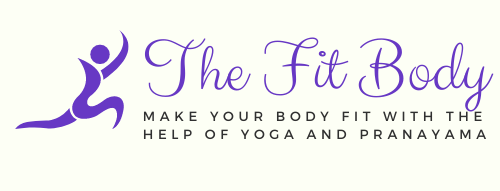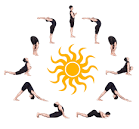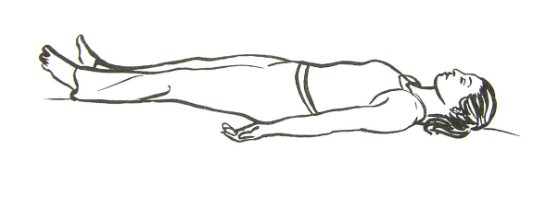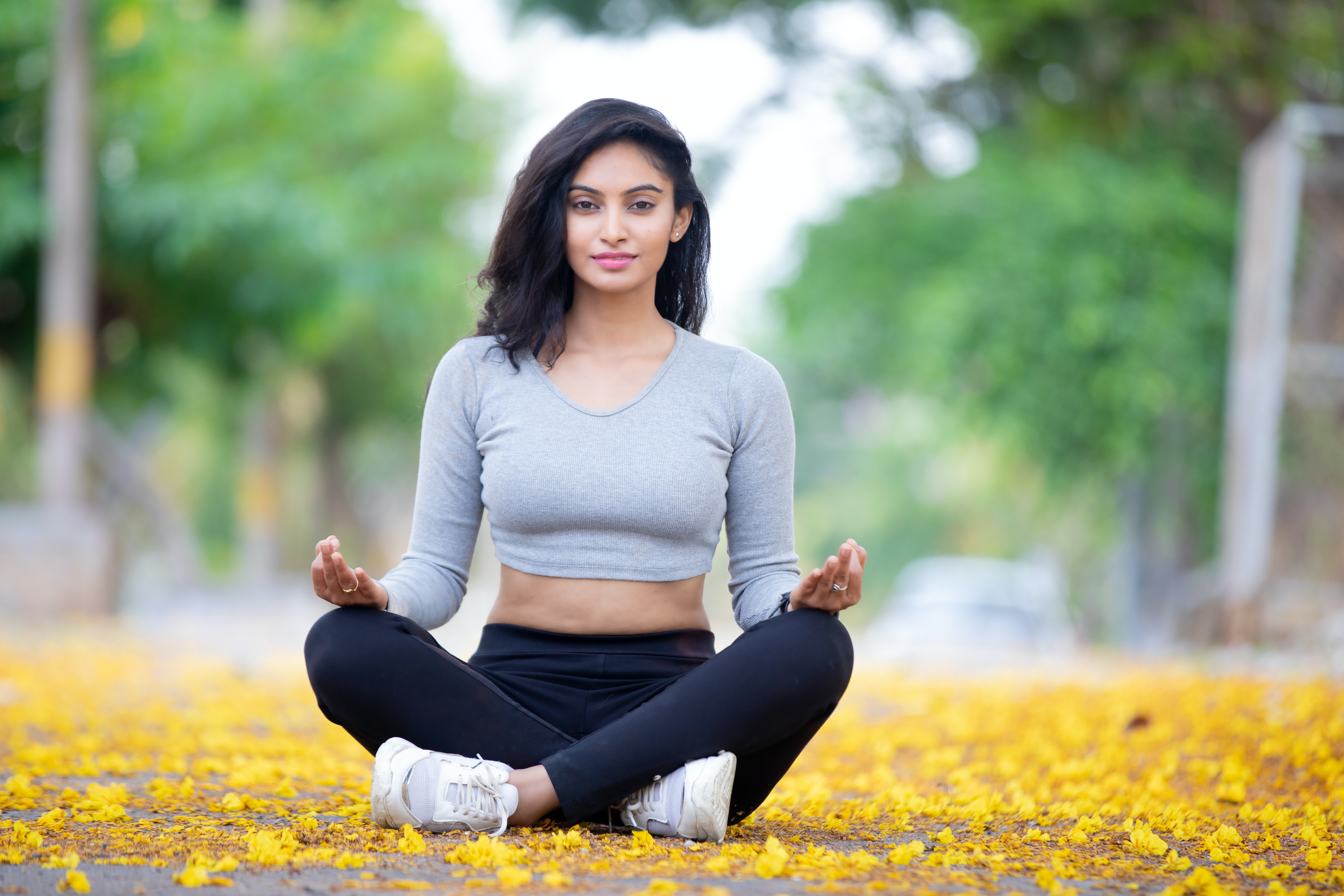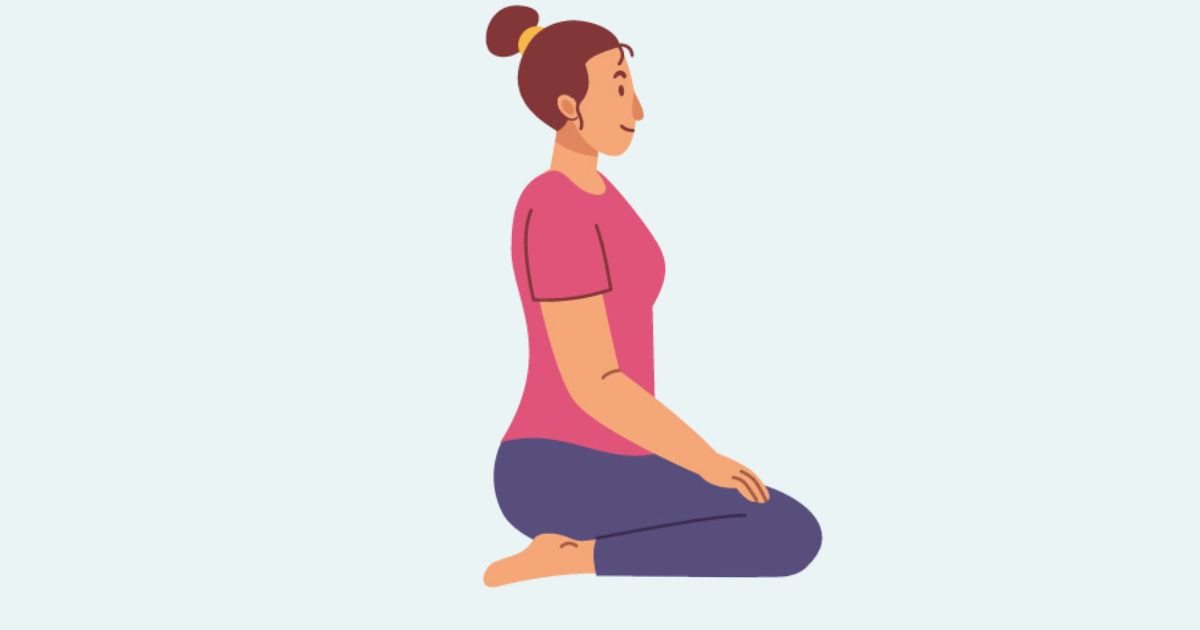Surya Namaskar, also known as Sun Salutation, is a popular sequence of yoga asanas (postures) performed in a flowing manner. It is a holistic exercise that combines physical, mental, and spiritual aspects. Surya Namaskar is traditionally practiced at sunrise to pay homage to the sun, which is considered a symbol of vitality and energy.
The sequence typically consists of 12 asanas performed in a specific order, synchronized with the breath. Each asana has its specific benefits for different parts of the body. Here is a general description of the 12 asanas:
- Pranamasana (Prayer Pose): Stand at the front of your mat with hands in prayer position, focusing on your breath and setting intentions.
- Hastauttanasana (Raised Arms Pose): Inhale and stretch your arms up and arch your back slightly.
- Hasta Padasana (Hand to Foot Pose): Exhale and bend forward, touching your hands to the floor beside your feet.
- Ashwa Sanchalanasana (Equestrian Pose): Inhale and step your right leg back into a lunge position, with your left knee bent and hands on either side of your left foot.
- Dandasana (Stick Pose): As you exhale, step your left leg back into a plank position, aligning your body in a straight line.
- Ashtanga Namaskara (Salute with Eight Parts): Lower your knees, chest, and chin to the floor while keeping your hips raised, as in a modified push-up position.
- Bhujangasana (Cobra Pose): Inhale and slide forward into a gentle backbend, keeping your hands beside your shoulders.
- Parvatasana (Mountain Pose): Exhale and lift your hips while straightening your arms and legs, forming an inverted “V” shape.
- Ashwa Sanchalanasana (Equestrian Pose): Inhale and step your right leg forward into a lunge position, similar to pose 4.
- Hasta Padasana (Hand to Foot Pose): Exhale and bring your left leg forward to touch your hands, as in pose 3.
- Hastauttanasana (Raised Arms Pose): Inhale and stretch your arms up and arch your back, as in pose 2.
- Pranamasana (Prayer Pose): Exhale and return to the starting position with hands in prayer.
The above sequence is performed as a continuous flow, with each asana transitioning smoothly into the next. By repeating the sequence multiple times, you can build strength, flexibility, and improve overall well-being. It is important to practice Surya Namaskar with proper guidance and pay attention to your body’s limitations and capabilities.
Benefits of Surya Namaskar ( Sun Salutation ):
Surya Namaskar, or Sun Salutation, offers numerous benefits for the body, mind, and spirit. Here are some of the benefits of practicing Surya Namaskar:
- Physical Fitness: Surya Namaskar is a complete body workout that engages various muscle groups, promoting strength, flexibility, and toning of the body.
- Improved Flexibility: The sequence of asanas in Surya Namaskar involves stretching and bending movements, which enhance the flexibility of the spine, shoulders, hamstrings, and other muscle groups.
- Increased Energy: Surya Namaskar is invigorating and helps in increasing blood circulation, which boosts energy levels and revitalizes the body.
- Weight Management: Regular practice of Surya Namaskar can aid in weight loss by burning calories and improving metabolism.
- Mental Clarity and Focus: The coordinated movement and mindful breathing in Surya Namaskar help calm the mind, reduce stress, and improve mental focus and concentration.
- Improved Digestion: The asanas stimulate the digestive system, helping to improve digestion and alleviate digestive disorders.
- Balanced Hormones: Surya Namaskar can help regulate hormonal imbalances and promote overall hormonal health.
- Detoxification: The stretching and twisting movements in Surya Namaskar help in releasing toxins from the body and purifying it.
- Respiratory Health: The deep breathing techniques during the practice enhance lung capacity and improve respiratory function.
- Emotional Well-being: Surya Namaskar can have a positive impact on emotional well-being, promoting a sense of peace, positivity, and emotional balance.
Restrictions of Surya Namaskar ( Sun Salutation ):
While Surya Namaskar offers numerous benefits, there are a few precautions and restrictions to keep in mind:
- Beginners and individuals with certain health conditions should practice under the guidance of a qualified yoga instructor.
- People with high blood pressure, heart problems, or spinal injuries should modify or avoid certain poses.
- Pregnant women should consult their healthcare provider before practicing Surya Namaskar and modify the practice as necessary.
- If you have any specific injuries, chronic conditions, or medical concerns, it is advisable to seek medical advice before practicing Surya Namaskar.
- Practice at your own pace and avoid overexertion. Listen to your body and honor its limitations.
- Warm-up adequately before starting the practice to prepare the body for the movements.
- If you experience pain, discomfort, or dizziness during the practice, stop immediately and seek appropriate guidance.
Remember, it is important to practice Surya Namaskar with mindfulness, respect for your body’s capabilities, and within your own comfort level.
-
Surya Namaskar ( Sun Salutation )

Surya Namaskar, also known as Sun Salutation, is a popular sequence of yoga asanas (postures) performed in a flowing manner. It is a holistic exercise that combines physical, mental, and spiritual aspects. Surya Namaskar is traditionally practiced at sunrise to pay homage to the sun, which is considered a symbol …
-
Savasana ( Corpse Pose )

Savasana, also known as the Corpse Pose, is a foundational and deeply relaxing yoga asana. It is typically practiced at the end of a yoga session to promote deep rest and integration. Here’s a description of how to practice Savasana: Savasana is a wonderful practice for releasing physical and mental …
-
Padmasana ( Lotus pose )

Lotus pose, also known as Padmasana in Sanskrit, is a popular seated posture in yoga. It is often associated with meditation and is considered one of the more advanced asanas (postures) due to its level of flexibility and openness required in the hips and knees. Here’s a description of the …
-
Sukhasana (Easy Pose)

Shukhasana, also known as the “Easy Pose” or “Comfortable Pose,” is a basic seated yoga posture that promotes relaxation and grounding. Here’s how you can practice Shukhasana: Benefits of Shukhasana or Easy Pose: Restrictions and Considerations: Note: If you have any pre-existing knee or hip injuries, or if you experience …
-
Vajrasana (Diamond Pose)

Vajrasana is a popular yoga asana, also known as the Diamond Pose or Thunderbolt Pose. “Vajra” means diamond or thunderbolt in Sanskrit, and “asana” refers to a yoga posture or pose. Vajrasana is commonly practiced for meditation, digestion, and promoting overall well-being. To practice Vajrasana: Vajrasana is considered a sitting …
